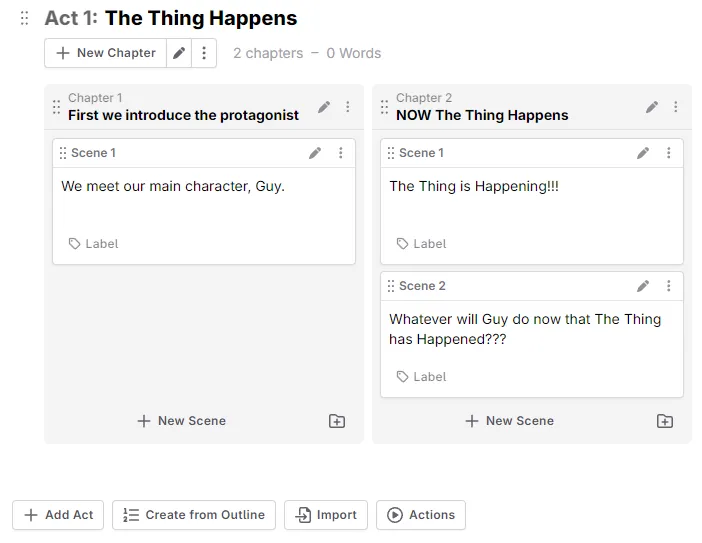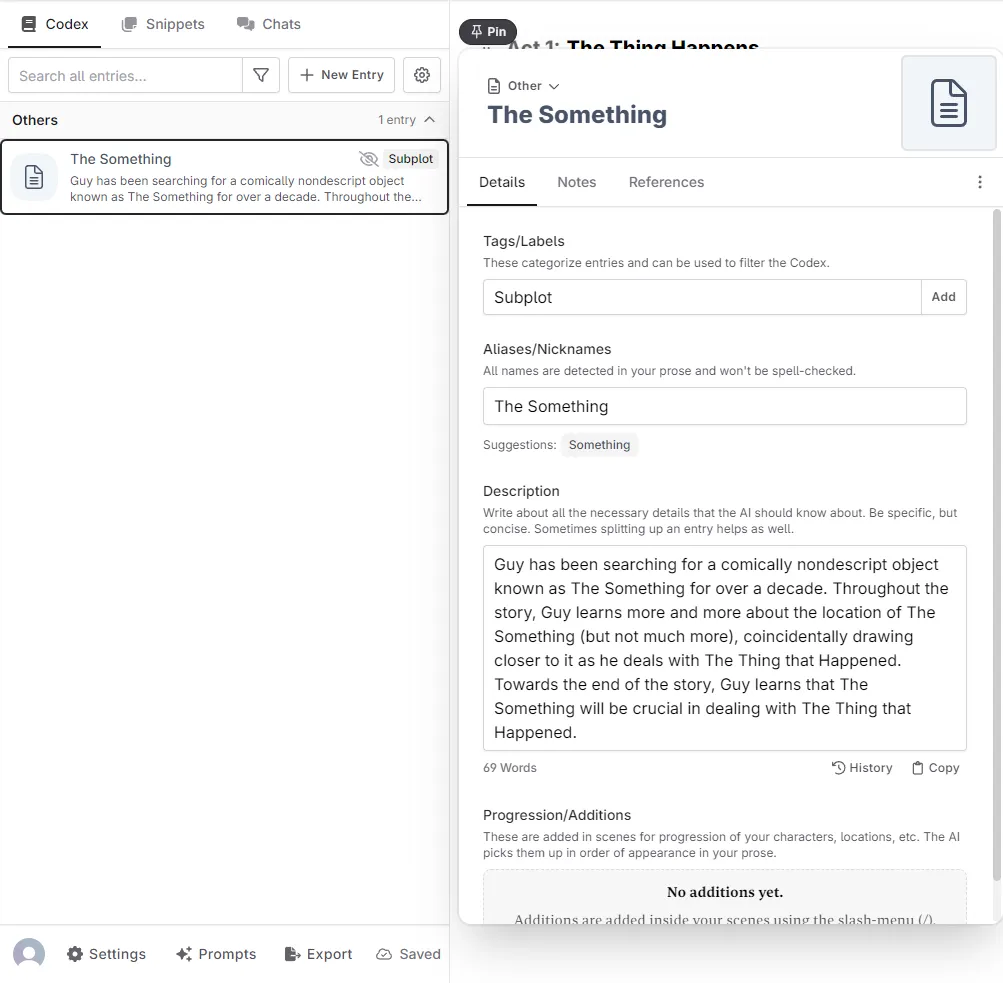Plotting a Story with AI
- Reading time
- 3 min read
- Written by
- by Kate Robinson

For many writers, the most difficult aspect in penning a story is getting the pen moving to begin with. With Novelcrafter’s AI tools, plotting and outlining a story can be made as easy and streamlined as you want.
The Codex
Novelcrafter’s codex is more than just a collection of your notes. Beyond helping you keep track of information, it also helps the AI generate useful outputs by adding your codex entries to its knowledge base. Writing things like your summary into a codex entry can save you a lot of work; rather than typing out the whole thing every prompt, you can just reference its codex entry! While not explicitly necessary, all levels of the writing process benefit from a growing codex.
1. The Summary
Thinking of a summary or synopsis is generally where the writing process first begins. A good summary of your story will give you (and the AI) a solid foundation to determine more precise details later on.
Generating an Initial Summary
A summary can be as short or long as you want, but it should at least cover the major parts of the story’s plot (an inciting incident, a major twist, a climactic moment, et cetera). When using chat to prompt an AI for a summary, include as much detail as you’d like and have it fill in any gaps. You’ll want to instruct it to hit those major plot points as well, if you haven’t already in your prompt.
Refining Inputs and Outputs
No matter which model you use, an AI will seldom give you exactly what you want from your first prompt. It may get confused when organising your summary, or you may not like what it came up with to begin with. Refining your initial prompt - enforcing what you want the AI to do or forbidding it from what you don’t - is often a necessary process whenever you use an AI, even beyond writing your story’s summary. The refining process might also include asking the AI to expand on what it’s written or even editing its response yourself to suit your needs.
2. The Outline
The outline serves as the general structure of the story; individual acts, chapters and scenes are all mapped onto the outline to form the complete product.
Generating an Outline
Based on your summary, you may already know what you want your story’s outline to look like. You can chat with your AI to have it generate an outline for you (don’t forget to refine!). When you ask the AI for an outline, you’ll probably want to tell it to conform to some sort of archetype: 3 act structure, the hero’s journey, or something like “3 acts with 5 chapters in each”. If you’d rather plan it out yourself manually, you can add acts to your outline, chapters to your acts, and scenes to your chapters.

The Create from Outline button streamlines the whole process for you by making all the acts and chapters at once.
Using Templates
Templates are pre-made outlines that can save you the trouble of organising your own. Novelcrafter comes with several common templates including but not limited to:
- 3 Act Structure A template that divides the story into three acts - a setup, confrontation, and resolution.
- Save the Cat A template perfect for screenwriting, where “saving a cat” serves as a catalyst for what’s to come.
- Hero’s Journey A template as old as history which takes the protagonist from a familiar world into the unknown.
You can even make your own templates as codex entries and have an AI use them in chat!
3. The Chapters
Chapters are smaller parts of the larger story told over the course of an act. Each chapter tends to have its own self-contained story that flows into the one following it.
Generating Chapter Summaries
Regardless of which archetype or template you used to make your outline, there should be some chapter summaries you want to write or expand. You can chat with the AI to generate or flesh out these chapters or come up with improvements yourself; either way, try to make sure the content of each chapter moves the story forward. More detailed chapter summaries make it easier for you or the AI to weave in subplots and synthesise story beats later on.
Generating Subplots
All stories have an overarching plot, but you may want to sprinkle in smaller plots that resolve throughout the story. When asking the AI to generate them for you and sorting through the response, keep in mind that subplots should be advanced throughout your story and should be resolved within the span of your story as well. For the best results, you should make a codex entry for each subplot you’d like to include, making them easier to reference when generating scene beats later on in the writing process.

Kate Robinson
Based in the UK, Kate has been writing since she was young, driven by a burning need to get the vivid tales in her head down on paper… or the computer screen.